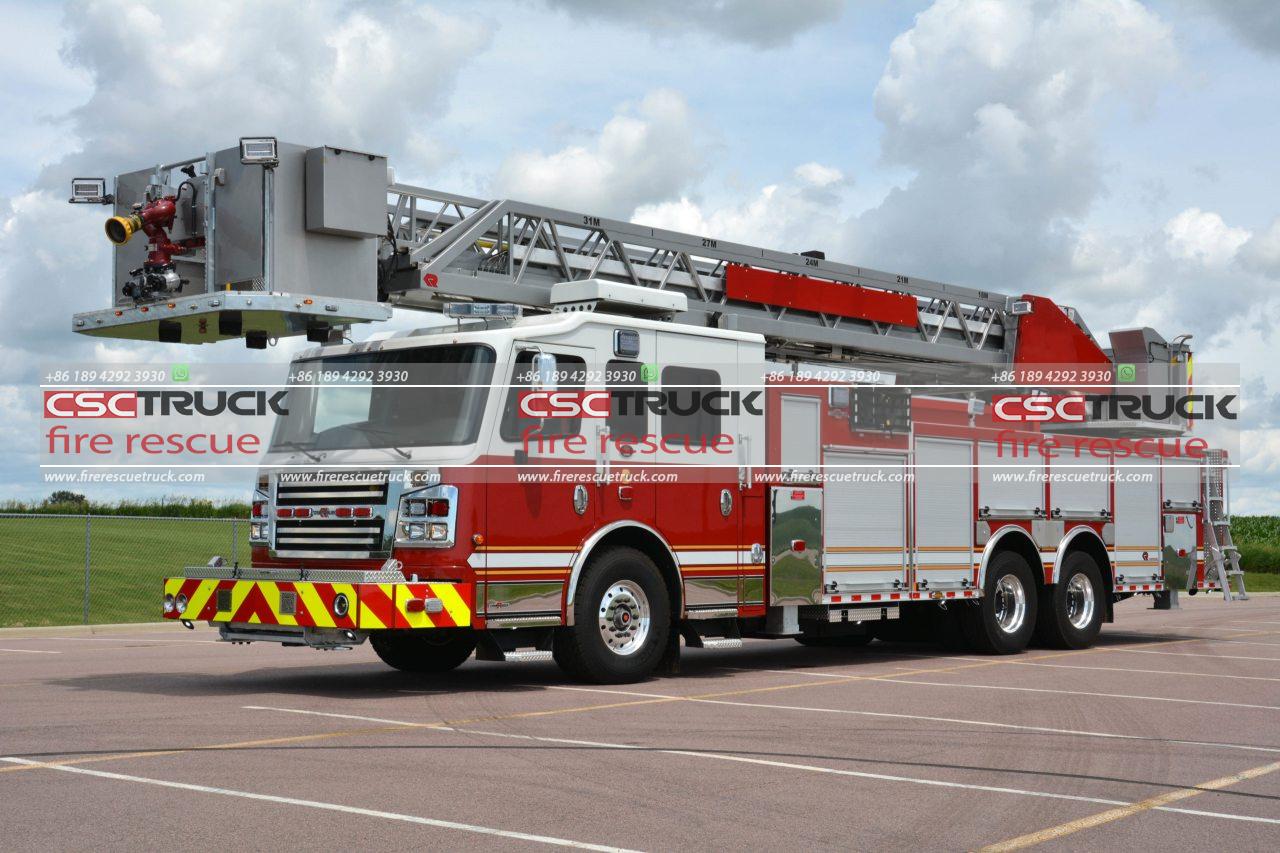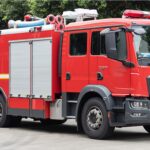Ladder Fire Truck: High-Performance Ladder Fire Trucks for Elevated Fire Access
In the realm of firefighting, having the right equipment can make all the difference between a successful operation and a catastrophic event. Among the most vital tools in a fire department’s arsenal is the ladder fire truck, also known as the aerial apparatus. These high-performance vehicles are engineered to provide elevated fire access, crucial for combating fires in multi-story buildings and performing high-angle rescues. This article delves into the intricacies of ladder fire trucks, exploring their design, capabilities, and the essential role they play in modern firefighting.
The Anatomy of a Ladder Fire Truck
A ladder fire truck is a marvel of engineering, combining strength, versatility, and advanced technology. At its core, a ladder truck features a robust chassis capable of supporting the heavy equipment it carries. The key component of these vehicles is the aerial ladder, which can extend to significant heights—sometimes over 100 feet—allowing firefighters to reach the upper floors of tall buildings.
The ladder itself is constructed from high-strength materials such as steel or aluminum, ensuring both durability and lightness. Modern ladders are telescopic, meaning they can extend in sections, providing flexibility in length and positioning. These ladders are often equipped with a basket or platform at the top, providing a safe and stable environment for firefighters to work from when elevated.
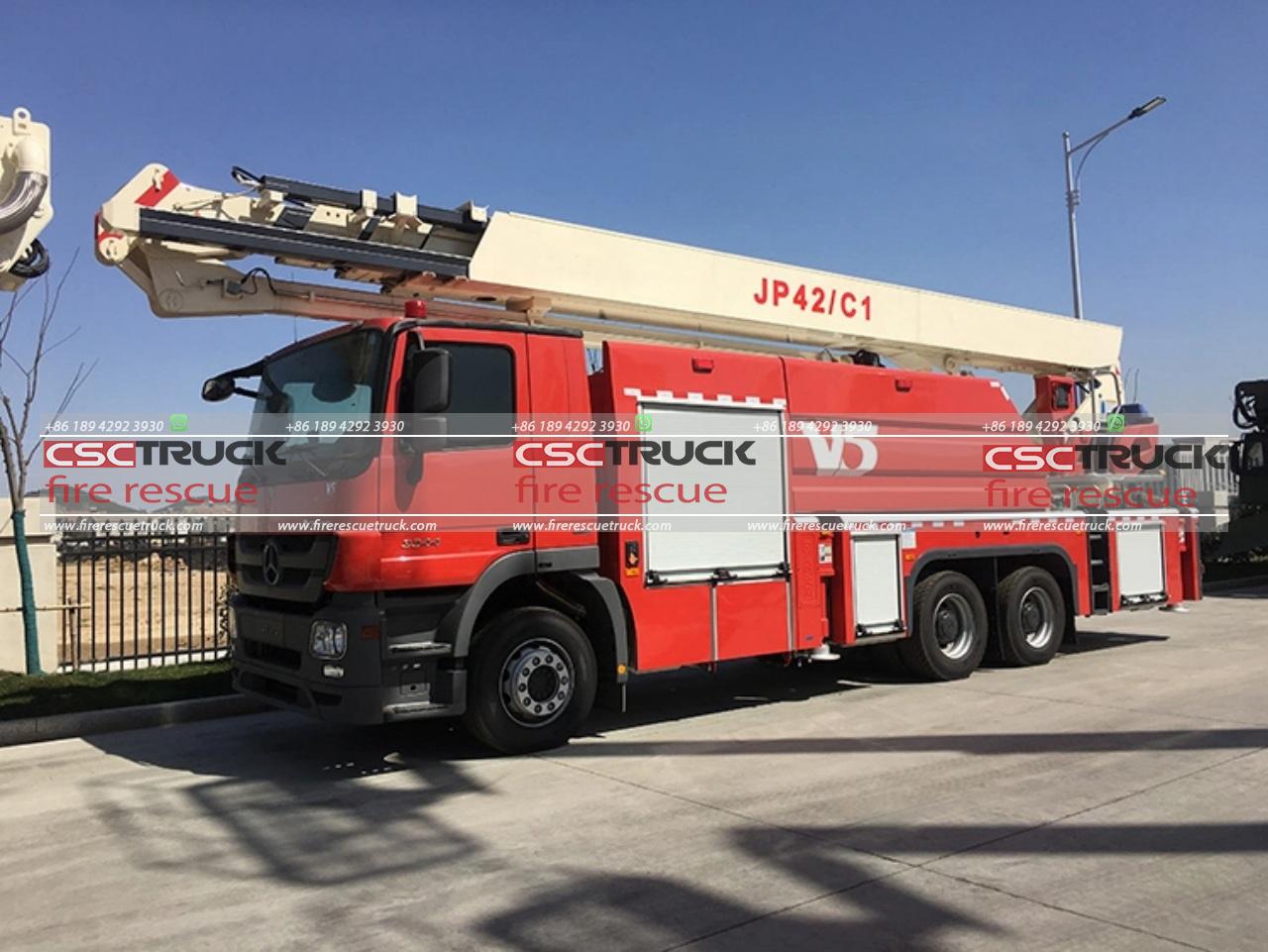
Advanced Features and Technology
Contemporary ladder fire trucks are outfitted with a suite of advanced features designed to enhance their performance and safety. Hydraulic systems power the extension and retraction of the ladder, as well as its rotation and angling, providing precise control. This hydraulic system is controlled from a sophisticated panel that may include joysticks and computer interfaces, allowing for intuitive operation even in high-stress situations.
Stability is paramount when operating a ladder at great heights, and modern ladder trucks come equipped with outriggers—extendable supports that deploy from the sides of the vehicle to ensure it remains steady. These outriggers are essential for distributing the truck’s weight and preventing tipping, especially on uneven terrain.
In addition to their mechanical features, many ladder trucks are integrated with state-of-the-art technology. Some models feature thermal imaging cameras mounted on the ladder, helping firefighters locate hot spots and victims through smoke and darkness. Other trucks may have communication systems that link directly with the command center, ensuring seamless coordination during operations.
The Role of Ladder Fire Trucks in Firefighting
Ladder fire trucks are indispensable in various firefighting scenarios. Their primary function is to provide access to elevated areas, which is critical in urban environments where buildings frequently rise above 3 stories. During a fire, time is of the essence, and the ability to quickly reach higher floors can save lives and property.
Beyond providing access, ladder trucks are also used for ventilation. By breaking windows or creating openings in the roof, firefighters can release hot gases and smoke, improving visibility and reducing the risk of flashover—a sudden, intense eruption of fire caused by superheated gases.
Moreover, ladder trucks are crucial for rescue operations. In scenarios where occupants are trapped on upper floors or rooftops, the aerial ladder offers a lifeline, allowing firefighters to evacuate individuals quickly and safely. The platforms or baskets at the top of the ladders are particularly useful for rescuing multiple people at once, including those who may be unable to climb down a ladder themselves.
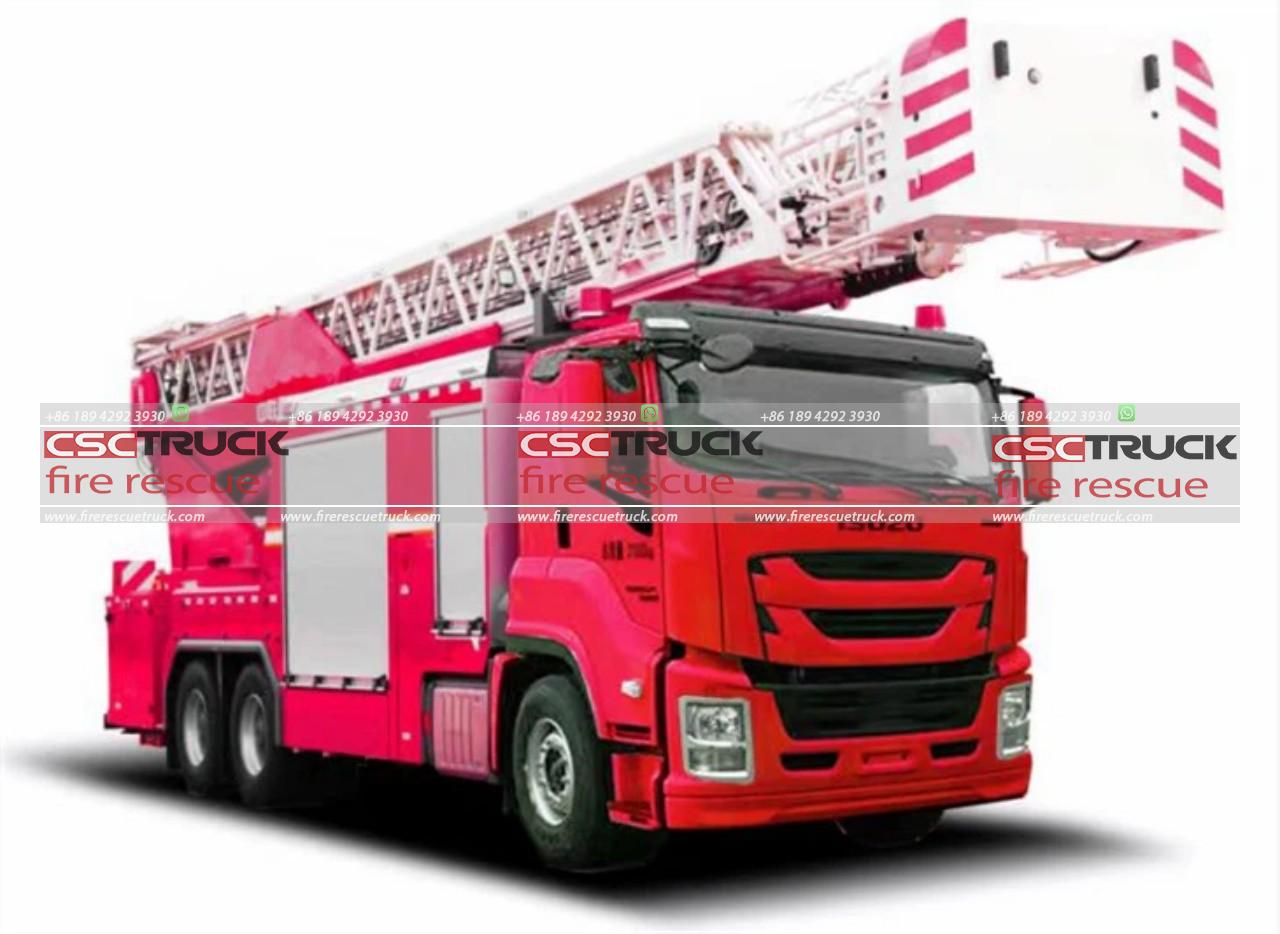
Training and Safety Considerations
Operating a ladder fire truck requires specialized training and a deep understanding of both the vehicle’s capabilities and the dynamics of fire behavior. Firefighters undergo rigorous training to master the use of the ladder, including deploying and maneuvering it in various scenarios. This training covers everything from basic operations to complex rescue techniques and emergency procedures in case of mechanical failure.
Safety is a paramount concern when working with ladder trucks. Firefighters must be aware of the risks involved, such as the potential for ladder collapse, electrical hazards from power lines, and the dangers of high winds. Regular maintenance and inspection of the ladder and its components are essential to ensure reliability and safety during operations.
Innovations and Future Trends
The field of firefighting technology is continually evolving, and ladder fire trucks are no exception. Manufacturers are constantly seeking ways to improve the performance, safety, and efficiency of these vehicles. One area of innovation is in the materials used for constructing ladders. Advances in composite materials promise ladders that are lighter yet stronger than traditional metal ones, enhancing both maneuverability and payload capacity.
Another trend is the integration of automation and smart technology. Future ladder trucks may feature autonomous capabilities, such as self-leveling systems that automatically adjust the outriggers for optimal stability or AI-driven sensors that assist in navigation and obstacle avoidance.
Electric and hybrid powertrains are also making their way into the realm of ladder trucks. These environmentally friendly alternatives to traditional diesel engines offer the benefits of reduced emissions and lower operating costs. As cities around the world strive to reduce their carbon footprints, the demand for green firefighting solutions is likely to grow.
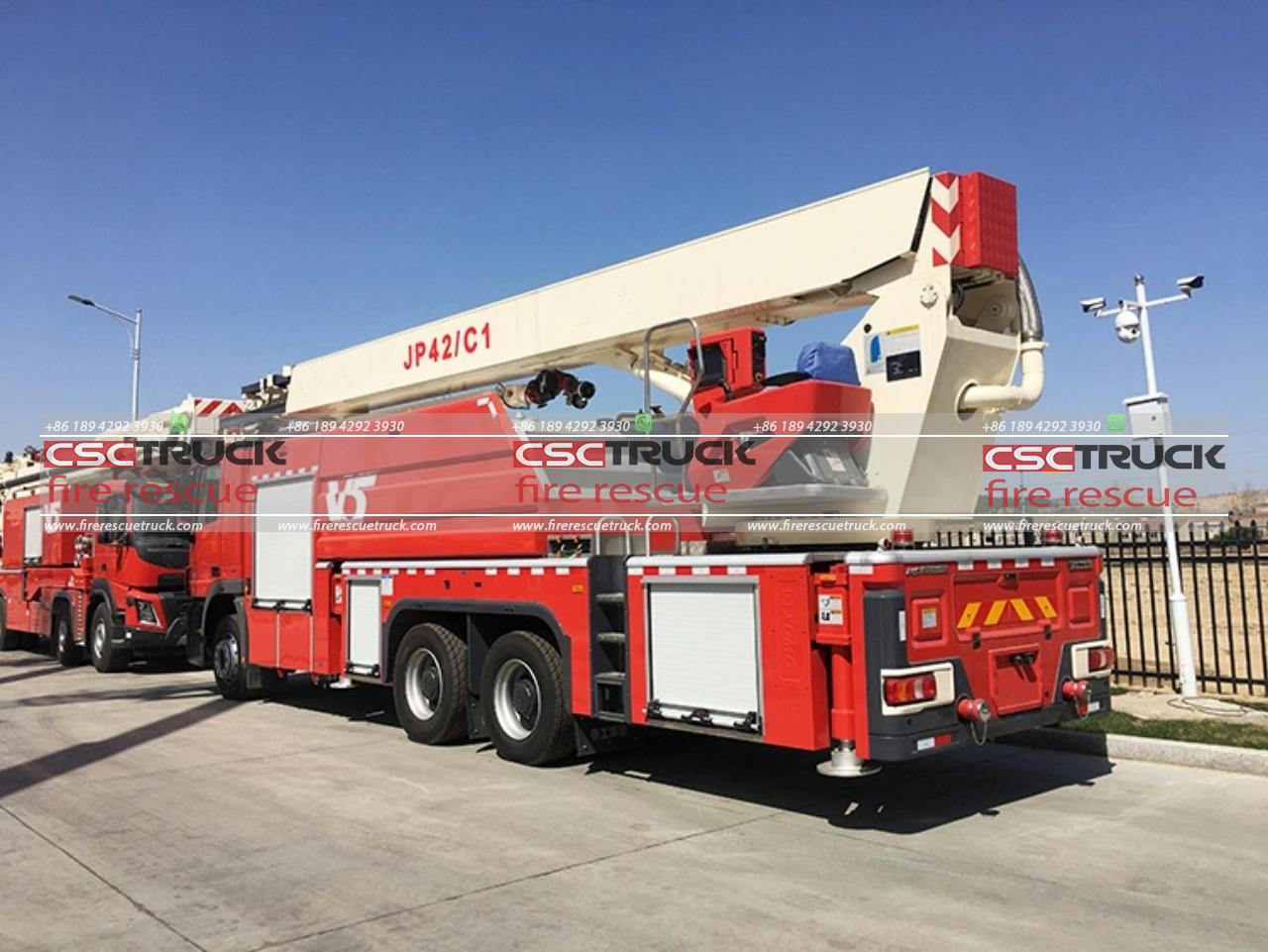
Conclusion
Ladder fire trucks are a testament to human ingenuity and the relentless pursuit of safety and efficiency in firefighting. These high-performance vehicles are crucial for accessing elevated areas, conducting rescues, and ventilating buildings during fires. With advanced features, rigorous training, and ongoing innovations, ladder fire trucks continue to evolve, meeting the ever-changing challenges faced by modern firefighters. As technology advances, we can expect these indispensable tools to become even more effective, further enhancing the capabilities of fire departments worldwide in their mission to protect lives and property.





